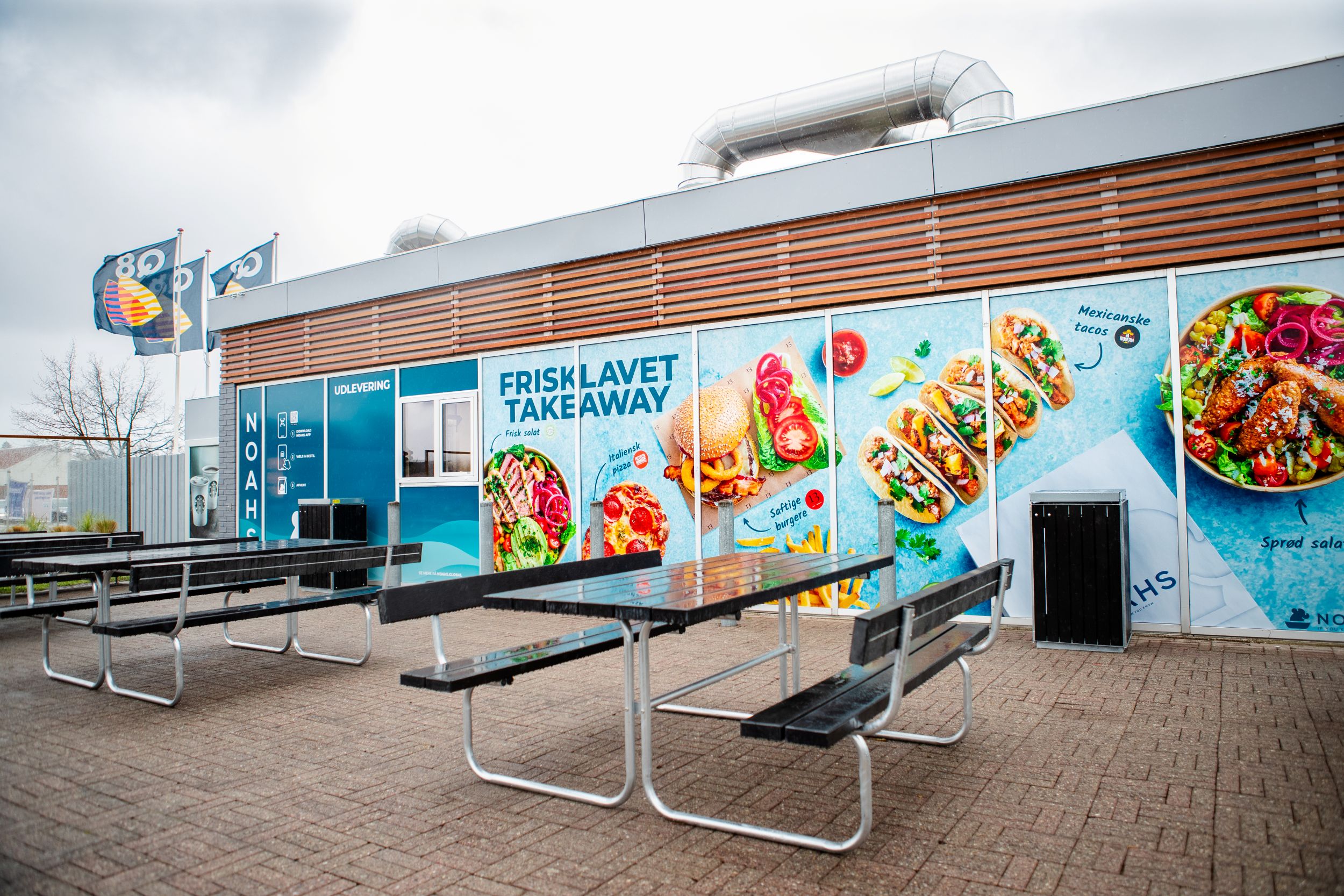At the very beginning of our conversation, Daniel said, “I think the least interesting part is who am I and where do I come from.” I couldn’t disagree more. The experience, knowledge, and passion he has for the food and restaurant industries (I like to divide them) are so immense that one might be jealous. However, the key point is that all this contributes to the development of an innovative, high-quality product. See for yourself.
Background and Thailand Experience
Tanya: Tell me a bit about your background and how it all started.
Daniel: I come from the chef universe. My background is purely culinary – I trained at the Copenhagen Restaurant School and spent almost a decade in kitchens. From age fifteen until my mid-twenties, that was my world: long hours, loud stoves, perfection chasing.
Then I moved to Thailand. It wasn’t planned as a life change, just a three-month escape. I had a backpack, a bit of curiosity, and an appetite for chaos. I ended up staying for years.
At twenty-four, I became an executive chef at a hotel without speaking a word of Thai. It was intense, but it showed me how much opportunity there was.
Thailand excels at Thai food, but when hotels tried to deliver international standards, it fell apart. I found a gap I could fill – helping raise culinary quality across borders. That led me to meet suppliers, learn the local ecosystem, and eventually create a small sandwich shop built around an Italian baker’s incredible bread.
It took off. Within a year or two, people were driving across the island to get our sandwiches. Then came the franchise requests. That’s when I started learning how networks really work – how ownership, logistics, and consistency shape growth.
We eventually acquired the bakery, built our own supply chain, and developed a lightweight tech system for franchise operations. Between 2015 and 2016, nobody in Thailand was doing that – digital ordering, logistics automation, data-driven kitchens. We scaled to 15-16 locations across four regions. That brand still exists today: Lucky 13 Sandwich.
We didn’t realize it then, but we were building a prototype for what NOAHS would later become – a low-cost, high-efficiency food network powered by tech.
The Shock That Sparked Reinvention
Tanya: And then COVID hit.
Daniel: Yeah. We were about to cross 20 locations. Ten more were in the pipeline. Then Thailand shut down overnight. The business froze completely.
We sold off parts of the company to keep the brand alive and moved back to Denmark. That period forced me to reflect on how fragile restaurants really are. The traditional model depends on constant human presence – and when that disappears, so does the business.
It was painful, but it also forced me to zoom out. I started thinking about who actually wins when the food industry gets digitized. And the answer wasn’t restaurants. It was retailers.
The Birth of NOAHS
Tanya: So that’s when the idea for NOAHS started forming?
Daniel: Exactly. Even before COVID, delivery platforms were already strangling restaurants with commissions. When the pandemic hit, it became ridiculous – platforms were practically giving food away to win market share.
So instead of fighting them, I started thinking: who benefits from all this digital behavior? Retailers already have the space, staff, and customer flow. Their old revenue pillars – fuel, tobacco, groceries – are declining. Food is their next growth engine.
That’s where NOAHS began. We decided to build a plug-and-play restaurant infrastructure for retailers – something that could sit inside a service station, supermarket, or travel hub and make them part of the digital food economy overnight.

What NOAHS Is
Tanya: For those who might not know NOAHS yet – how do you describe what you do?
Daniel: The simplest way I put it is: we integrate food into retail.
NOAHS is built on three verticals – technology, brands, and kitchen architecture.
The tech layer digitizes everything: POS, delivery platforms, BI, loyalty, data. The brand layer streams ready-to-operate food brands into existing stores. And the kitchen layer creates modular spaces designed for modern, multi-brand cooking.
We didn’t originally plan to design kitchens, but no one else was building for the kind of hybrid retail-hospitality environment we envisioned. So we had to.
It’s the opposite of the virtual-brand model. We’re not trying to patch dying restaurants with new logos.
We’re equipping retailers to become part of the food industry – because that’s where the real scale, capital, and relevance are.
Lessons from the Trenches
Tanya: What were some of the early mistakes or lessons you learned?
Daniel: Oh, plenty. We started too big. We built huge kitchens inside supermarkets – some with fifteen brands. They looked impressive but didn’t fit how retail actually operates.
We also separated the kitchen teams from retail staff, which killed the synergy. That was wrong.
Another was our project with the Danish State Railways. We turned empty ticket houses into food hubs. On paper, it was perfect: high traffic, government backing. But in reality, it was labor-heavy and detached from daily retail operations. People still chose 7-Eleven because it was faster and familiar.
That’s when it clicked: the winning model is integration, not addition.
Small 3-8 m² setups, like a taco counter or pizza module, inside an existing store – operated by their own staff, not ours. That’s how you scale sustainably.
Proof in Motion
Tanya: And what about your success stories?
Daniel: Take Q8, for example. Within two months, we helped launch Denmark’s biggest pizza brand across their stations. Today they’re live in over sixty locations, with close to ninety planned.
Every station already has our tech stack – meaning they can activate new brands with a click. If they want tacos or salads tomorrow, they can simply turn it on.
We don’t hire or manage the kitchen staff. We train the trainers. Q8 manages their own operations, and that’s exactly how it should be.
Look ten years ahead – retail will become hospitality. Shelves will disappear. The best retail spaces will transform into food environments – more experience, more community, more quality.

The Team Behind the Shift
Tanya: How big is your team today?
Daniel: We’re around forty people. About half are part of the ownership circle. It’s a mix of chefs, technologists, and operational minds. Everyone’s entrepreneurial – no passengers.
We’re scaling fast: Belgium, Luxembourg, and Ireland are launching this quarter, with roughly six hundred openings expected next year. And we’re already in talks with retailers in a dozen more markets.
It’s a movement now, not just a company.
On the Future of Food
Tanya: You’ve mentioned the future several times. What trends are you seeing ahead?
Daniel: People won’t cook the way they used to. Not because of laziness, but because time is shifting. That opens two parallel worlds: the everyday fast-casua lspace – where we operate – and the experiential side, where dining becomes an event. Both will grow.
What I don’t believe in are the over-engineered visions – super apps, AI diets, drones feeding you in 90 seconds.
Marc Lore’s Wonder or Kalanick’s CloudKitchens are impressive tech, but they strip away meaning. They build for control, not connection.
People don’t just want food faster; they want food that means something. That’s why NOAHS isn’t chasing efficiency for its own sake. We’re making existing infrastructure smarter, not replacing it.
Once that scales to hundreds of thousands of locations, the equation changes completely – retailers become active players in the food ecosystem rather than passive shelves for packaged goods.
A Closing Thought
Tanya: You’ve seen every side of the industry – chef, operator, founder. How do you see your role now?
Daniel: I don’t think it’s about me. The story of NOAHS is part of a bigger shift – a global reconfiguration of how food moves, where it’s made, and who delivers it.
We’re just one of the first teams building the scaffolding for that new world.
Food will become the connective tissue of retail. Technology will be invisible. And the brands that win will be the ones that feel human – simple, fast, but full of character.
That’s the future we’re building toward. One store, one kitchen, one smart plug-in at a time.
Interview by Tanya Alipchikova




